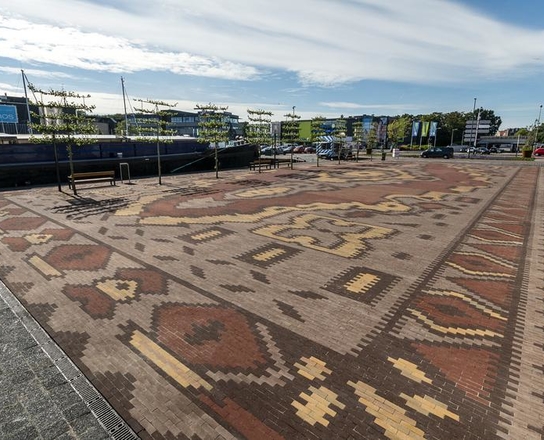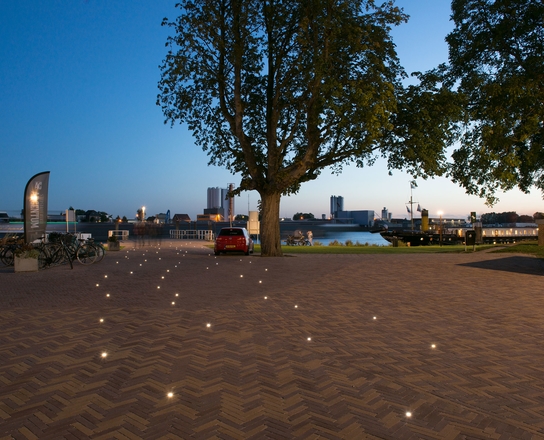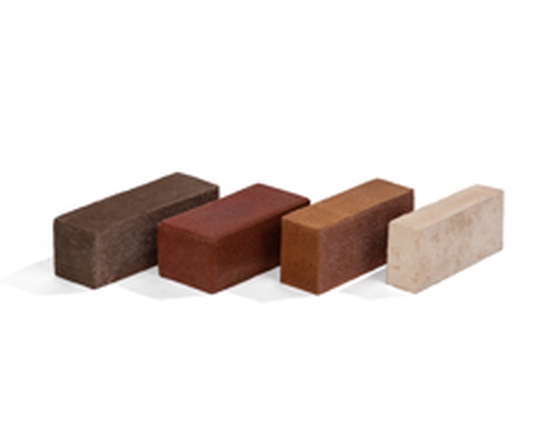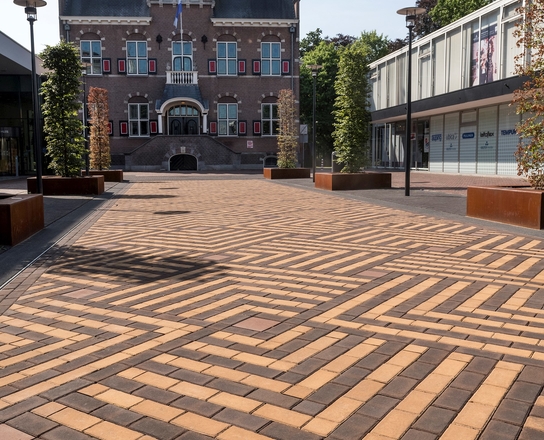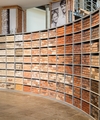
The natural ingredients of pavers
Pavers are made from a sophisticated mixture of different types of clay, sand, and other auxiliary materials. All of our raw materials are natural, and the clay is extracted locally, making our products extremely sustainable.
Local river clay
Many of our pavers contain large proportions of local river clay. River clay comprises clay, sand, and organic materials that the rivers carry from the mountains and deposit in the lower-lying deltas. The river clay for our pavers is extracted from the floodplains, often close to our plants. Using local river clay helps to lower the environmental impact of transport. In addition, river clay is officially regarded as a renewable raw material. As the river deposits a new layer of clay every year , river clay is extremely sustainable. River clay has lower purity, making it a ‘secondary’ clay. It contains relatively high quantities of sand, and its composition is not always consistent. As such, river clay is less stable than primary clay.
Primary clay
To produce high-quality pavers that satisfy market requirements, we also use primary clay. This clay was produced more than one million years ago and can be found in the ground in areas such as Westerwald and Oberlausitz in Germany. Primary clay is extremely pure, with a high clay content, and contains virtually no sand. It can be compared with the porcelain clay that kitchenware is often produced from. For our Oberlausitz plant, the majority of the clay is extracted from quarries within a fifteen kilometre radius of the plant. The extraction process often results in the creation of new nature areas. One of the features of primary clay is its high firing stability in the kiln.
Lava and chamotte
The clays that we use are too greasy for pure use. In technical terms, the clay mixture is not sufficiently plastic for forming stones, so we skim or scale the clay with lava and chamotte.
Lava is an inert material extracted from the Eifel low mountain range in Germany. The extracted chunks are ground and sieved. Lava is essentially ‘pre-fired’, which means there is no quartz shedding. Lava improves firing behaviour as well as drying behaviour. It gives the shaped stones an open structure, allowing them to dry evenly from the core through to the outside.
Chamotte is ground brick, a residual product from our own production process. The grain size is equivalent to that of sand. Like lava, chamotte is fired once, preventing it from decomposing when it is heated. Clay does this too. If the temperature rises or falls too quickly during firing, the pavers can break. By adding chamotte or lava to the clay mixture, there is less risk of breaking.
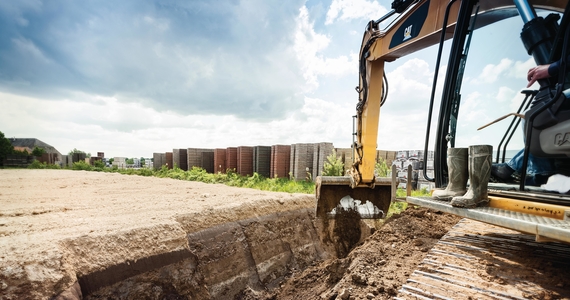
Moulded and extruded
We use a different mixture for our moulded and extruded pavers. The clay mixture of the extruded paver largely comprises primary clay. To extrude a good clay bar, the clay needs to be greasier and drier. If it isn’t, the bar will sag.
The mixture used for moulded pavers is mostly composed of river clay, which contains more moisture, sand, and other materials due to the journey that the clay particles go on before depositing in lower lying deltas. The higher moisture content means that the clay can be more easily pressed into and out of the moulds. Recently shaped moulded bricks are much softer and can be kneaded more easily than a newly shaped extruded brick.
In many cases, the type of stone that is most representative in the streetscape of a country or region is determined by culture and history. The Netherlands has historically used moulded pavers, while Germany has traditionally used extruded stones. This is because of the local availability of raw materials: river clay in the river deltas of the Netherlands and primary clay in Germany.
Clay and colours
Clay is an important factor in the ultimate colour of the stones. A high iron content in the clay produces a red colour after firing, while lime gives more of a yellow colour. The type of clay also determines the colour. A large proportion of primary clay tends to produce more pronounced colours. To produce some colours, we need to add natural minerals, such as manganese oxide.
The sand colour in sand-coated stones is also a determining factor when it comes to appearance. The atmosphere in the kiln is also important – the temperature, firing curve, stacking method of the stones on the kiln trolleys, and the oxygen content in the kiln all have an impact on the ultimate colour and colour nuance. You can create your own unique colour by mixing.
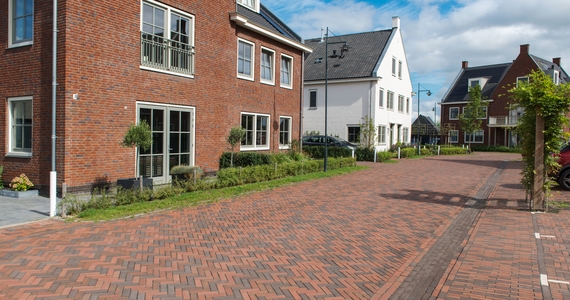
Quality control
The quality of our pavers stands and falls with the correct ratios, which is why we have our clay mixtures checked by independent experts and bodies every day. They measure the clay content, ratio between coarse and fine sand, and the quantities of iron, lime, and organic substances. This allows us to adjust the ratios and achieve the perfect mixture.


